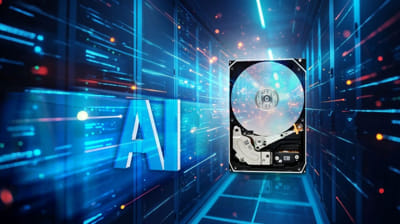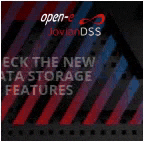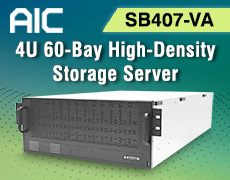Storage for Huge AI Data Demands
Economically, only possible using HDDs as per an opinion piece from Rainer Kaese, Toshiba Europe
This is a Press Release edited by StorageNewsletter.com on February 5, 2025 at 2:01 pm By Rainer W. Kaese, senior manager, HDD business development at Toshiba Electronics Europe GmbH
By Rainer W. Kaese, senior manager, HDD business development at Toshiba Electronics Europe GmbH
Artificial intelligence (AI) relies on data – data in enormous quantities that must be reliably collected and made available for training and analyses. Economically, this is only possible using HDDs, which fulfil the requirements of AI better than is often expected.
AI is currently transforming many industries. It helps to automate processes and make better decisions, but can only do so if it is supplied with sufficient data. The larger the data volumes, the better AI models can learn, recognise patterns and detect anomalies. This is why companies are increasingly accumulating huge amounts of data, driven by the desire to gain valuable insights in completely new areas by accessing additional data sources.

But how can the large and growing flow of data be managed? This requires storage architectures that offer hundreds of terabytes or even several petabytes of storage space, depending on the company, which can be expanded as required. After all, the data should not flow into the void at some point so that it is lost for the training of AI models or AI analyses.
Hard disks are the storage media of choice in these scale-out architectures, as they are the only way to provide the required capacities economically. Flash memory is still around 5 to 8 times more expensive per unit of capacity and is therefore only used in selected areas, for example as a cache or in high-performance systems. In most cases and for the majority of AI data, however, HDDs are sufficient. Indeed, they deliver better performance than companies often assume, especially when combined.
Faster than expected
When storing large amounts of data, sequential writing is particularly important. This is a key discipline of HDDs, and one in which they have improved in recent years thanks to firmware optimisations such as the more intelligent planning of test routines. Current models achieve around 300MB/s, compared to less than 200MB/s 10 years ago. The performance of random read accesses, which is important for retrieving and providing data for analyses, has also increased considerably during this period, from around 100 to over 200 IO/s.
These performance values are of course a long way from those of current SSDs. However, since many terabytes or petabytes of data are involved, several HDDs are required anyway to process the write and read operations in parallel in modern storage architectures. Performance grows massively with increasing numbers of HDDs: a single storage system with several dozen drives can achieve more than 15GB /s and 15,000 IO/s:
Hard drive manufacturers such as Toshiba also work closely with storage system and controller providers to find optimisation options, develop reference architectures, and work out best practices for companies using these solutions. Performance values in practice depend not only on the hardware itself but also on its configuration. Tests in the Toshiba HDD Lab have shown that a system with 60 HDDs in a RAID-60/RAID-Z2 configuration (i.e. several HDD groups in parallel, each with double redundancy) as storage for AI applications delivers a sequential read/write performance of up to 10GB/s over a network and also has a certain agility with 9,000 write and 30,000 read IO/s.
Ultimately, it depends on the specific application and the associated performance requirements as to which hardware equipment and configuration is best suited to capturing data and making it available for AI.
Growing storage capacities
Thanks to continuous further development, HDDs have maintained their price advantage over SSDs in recent years – and will continue to do so for the foreseeable future. In the past, helium filling and thinner disks, among other things, ensured that the capacity of drives increased by around 2TB/year while costs remained the same; now it is the new MAMR and HAMR recording processes.
MAMR stands for Microwave Assisted Magnetic Recording and uses microwaves to focus the magnetic flux at the recording head. This means that less magnetic energy is required and the recording head can be smaller. A smaller write head means more densely written bits and data tracks and therefore a higher storage capacity. In the next-gen of MAMR, the microwaves will also activate the magnetic material of the disks so that even less magnetic energy is required.
MAMR is already used in current HDD models and enables capacities of up to 24TB/drive – in combination with Shingled Magnetic Recording (SMR) up to 28TB is achievable. Over the next few years, MAMR is expected to increase the capacity of HDDs to 30 to 40TB before Heat Assisted Magnetic Recording (HAMR) gradually takes over. HAMR still requires development work, for example in terms of the reliability and costs of the new technology, but has already demonstrated its potential for higher capacities in prototypes.
HAMR uses a near-field laser to heat the magnetic material of the disks so that less magnetic energy can be used for writing; resulting in smaller write heads and a higher data density, as with MAMR. This means that HDDs will still be well-positioned in the coming years to reliably and economically absorb the growing amount of data generated by sensors, machines and human beings and make it available with performance both for training AI models and for use in AI applications.













 Subscribe to our free daily newsletter
Subscribe to our free daily newsletter

